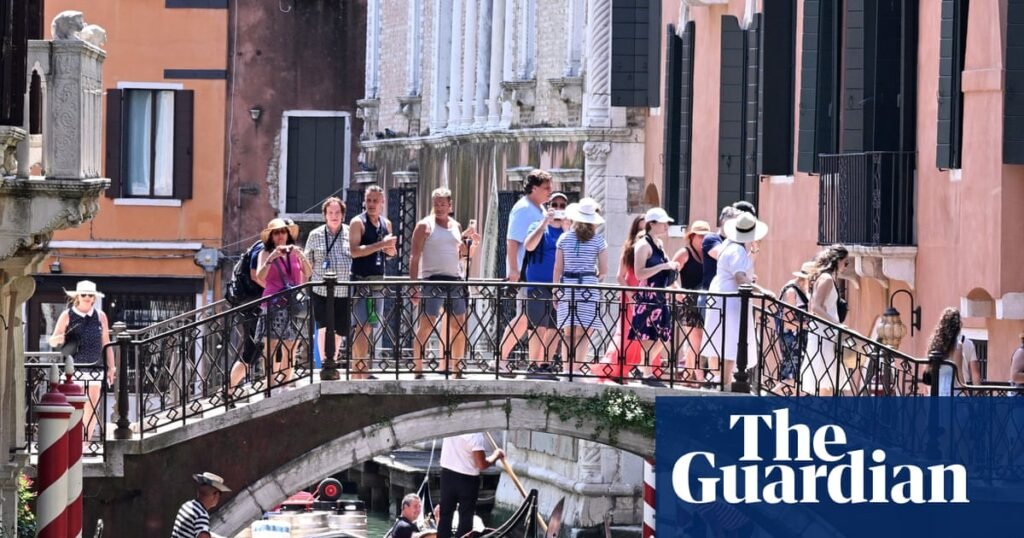Venice: The Paradox of Overrun Tourism
Venice, a marvel of architectural beauty and historical significance, has been a tourist hotspot since the mid-18th century, attracting millions to its enchanting canals and iconic landmarks. However, a troubling trend has emerged, painting a stark picture of the city’s relationship with tourism.
The Evolving Nature of Tourism in Venice
The Rise of Unsanctioned Activities
Tourists are not merely flocking to Venice for leisurely exploration; a notable portion seems intent on engaging in unsanctioned activities. A recent incident involving a couple from the UK swimming in a canal exemplifies this growing issue. Such behavior is not just frowned upon—it’s illegal. The couple faced hefty fines of €450 each and a 48-hour ban from the city, abruptly cutting short their holiday.
Public Perception of Tourist Behavior
Residents of Venice have voiced their concerns regarding these unruly tourists. Campaign groups like Venezia NON è Disneyland advocate for stricter regulations and harsher penalties for those who disrespect the city’s laws and heritage. While the comparison to Disneyland may seem extreme, it underscores a growing sentiment that tourists need to adhere to behavioral standards reflecting the city’s values.
The Persistent Problem of Canal Misconduct
More than Just Swimming: A Culture of Recklessness
Swimming in the canals has become just one layer of a complex issue. In 2023 alone, instances of spectators jumping off high structures into the waterways were frequently reported. There have also been embarrassing moments when tourists engaged in activities like surfing in the Grand Canal—an act that poses risks to both the individuals and the structural integrity of the canals.
Beyond the Water: Other Offenses
Misbehavior extends beyond reckless swimming. Sightseers have been caught sunbathing in front of historic churches, paddleboarding on scenic routes, and even cycling through picturesque streets—activities that detract from Venice’s charm. Furthermore, littering and feeding pigeons has become commonplace, turning the streets into pollution hotspots and overwhelming local infrastructures.
Efforts to Mitigate the Impact of Tourism
Response from Authorities
In reaction to these pressures, local authorities are ramping up their enforcement efforts. Over 1,000 expulsion orders have been issued for various infractions since the beginning of the year. Despite these measures, managing crowds has proven to be a daunting task—especially given that daily visitors sometimes outnumber the city’s residents by almost twofold.
Implementing a Tourist Tax
To manage the influx, Venice has introduced a tourist tax of €5 for day visitors, especially during peak seasons. This fee doubles for last-minute bookings and aims to discourage casual day-trippers who may not respect local customs and regulations. While this might seem steep to some, it’s a strategy meant to safeguard the city’s integrity and sustainability.
Preserving Venice’s Heritage Amidst Challenges
The Balancing Act: Tourism vs. Preservation
As the debate surrounding tourism in Venice continues, it is crucial to strike a balance. Support for tourism is vital for the city’s economy, but it must be managed diligently to protect Venice’s cultural integrity. As many locals have pointed out, "Tourism is important, but Venice must be defended from those who would disrespect it."
A Call for Respect for Local Culture
In counterpoint to this challenging situation, it’s essential for visitors to recognize the importance of respecting Venice’s unique environment. Traveling with an appreciation for local customs and regulations can help bridge the gap between tourists and residents, fostering a healthier relationship.
What You Can Do
If you’re planning to visit Venice, consider being a responsible traveler. Familiarize yourself with local laws, respect public spaces, and aim to engage in activities that reflect a deep appreciation for the city’s rich heritage.
Conclusion: The Future of Tourism in Venice
The future of tourism in Venice hangs in the balance. While the enchanting beauty of the canals and historic sites continues to captivate hearts worldwide, the need for responsible tourism has never been more urgent. As the city grapples with the challenges posed by its own popularity, a collaborative effort from both locals and visitors can ensure that Venice retains its charm for generations to come.
In this dynamic exchange between culture and tourism, the ultimate goal remains clear: to preserve the essence of Venice while welcoming those who come to admire its magic.


